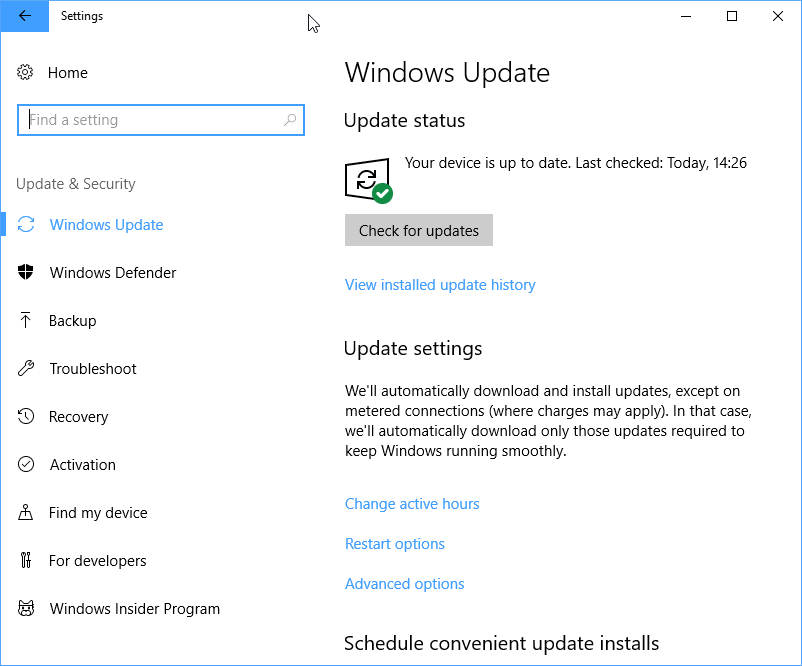Windows 10: less downtime during feature upgrades
Microsoft plans to roll out a change in the coming Windows 10 Fall Creators Update that aims to reduce the time the computer is installing the update.
The new feature shifts some processes which are currently processed during installation of the update.
Microsoft separates Windows 10 updates into online and offline phases. The process begins with the online phase. Windows Update finds a new update for the PC and starts to download it.
Up until now, that is all that happens in the online phase. Windows waits for the PC to restart to install the downloaded update on the machine.
The offline phase begins with the restart and access to the PC is not available until it completes. The phase includes the installation, but also processes such as backing up user content or the laying down of new OS files (Windows Image WIM).
Windows 10: new upgrade process

The following table highlights the changes between the old and new update process on machines running Microsoft's Windows 10 operating system.
| Old Process | New Process | |
| Online Phase | PC checks for updates | PC checks for updates |
| Update gets downloaded | Update gets downloaded | |
| PC waits for reboot | User content is backed up | |
| New OS files are laid down | ||
| PC waits for reboot | ||
| Offline Phase | PC reboots to begin install process | PC reboots to begin install process |
| User content is backed up | Drivers and other required OS files are migrated | |
| New OS files are laid down | User content is restored | |
| Drivers and other required OS files are migrated | PC reboots and the update finishes | |
| User content is restored | ||
| PC reboots and the update finishes |
Microsoft moved some processes to the online phase which are not really required to run in the offline phase of the update process.
Since users may use the PC like they normally would when the update is in the online phase, they have more time to work on the device during updates. The offline phase, the time the PC cannot be used because of the updating, is reduced because some of the processes were moved to the online phase.
Microsoft notes that the overall time that updates require may be longer, as the processes that were moved from the offline phase to the online phase run in low priority modes to avoid impacting a user's work on the device.
In short: The time that updates block users from accessing the Windows computer has been reduced.
Verdict
Microsoft's work on making the Windows update process more comfortable to the user continues. The company needs to do this, as it will release two feature updates for Windows 10 each year. This means that users will run through this process twice a year, provided that they do install both feature updates and don't sit one out.
Windows Insiders will benefit from this even more, as new updates are pushed out by Microsoft more frequently.
The announcement was made in the Feedback Hub.
This article was first seen on ComTek's "TekBits" Technology News

- Log in to post comments